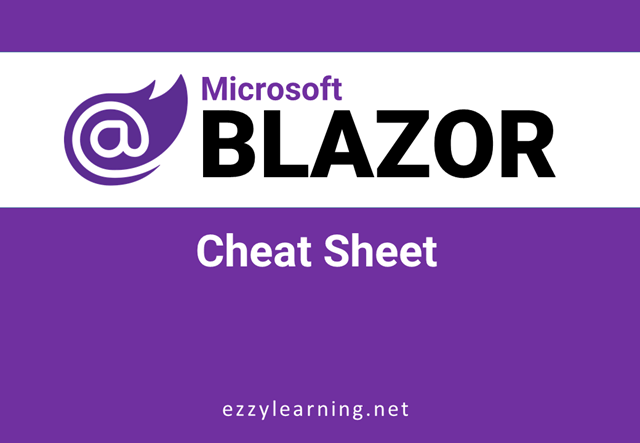- Graphql Cheat Sheet Pdf
- Graphql Wildcard
- Graphql Injection Cheat Sheet
- Graphql Disable Introspection
- Graphql Cheat Sheet Download
- Graphql Cheat Sheets
- The 'GraphQL Cheat Sheet' Lesson is part of the full, Introduction to GraphQL course featured in this preview video. Here's what you'd learn in this lesson: Scott references a resource to utilize when constructing a GraphQL Schema.
- We use the first row an keys and the rest as values. We analyze every value and if for example a column (except for the first row) has only numbers, we understand that this is a numeric field. We use that info to create a GraphQL schema for your spreadsheet and then create the actual API for you.
- GraphQL Cheat Sheet This is a basic cheat sheet for GraphQL – a query language for APIs and a runtime for fulfilling those queries with your existing data.
- Netsh interface ip show config netsh interface ip show config netsh -c interface dump config.txt # dump config netsh -f config.txt # import config.
The graphql/utilities module contains common useful computations to use withthe GraphQL language and type objects. You can import either from the graphql/utilities module, or from the root graphql module. For example:
I went for the full package of the book with the cheat sheets. The cheat sheets are giving you a very compressed guide of good practices. Can only recommend this to devs that want to build a larger project with #GraphQL.
Overview#
Introspection
Schema Language
Graphql Cheat Sheet Pdf
Visitors
Value Validation
Introspection#
introspectionQuery#
A GraphQL query that queries a server's introspection system for enoughinformation to reproduce that server's type system.
buildClientSchema#
Graphql Wildcard
Build a GraphQLSchema for use by client tools.
Given the result of a client running the introspection query, creates andreturns a GraphQLSchema instance which can be then used with all GraphQL.jstools, but cannot be used to execute a query, as introspection does notrepresent the 'resolver', 'parse' or 'serialize' functions or any otherserver-internal mechanisms.
Schema Representation#

buildSchema#
Creates a GraphQLSchema object from GraphQL schema language. The schema will use default resolvers. For more detail on the GraphQL schema language, see the schema language docs or this schema language cheat sheet.
printSchema#
Prints the provided schema in the Schema Language format.
printIntrospectionSchema#
Prints the built-in introspection schema in the Schema Language format.
buildASTSchema#
This takes the ast of a schema document produced by parseSchemaIntoAST ingraphql/language/schema and constructs a GraphQLSchema instance which can bethen used with all GraphQL.js tools, but cannot be used to execute a query, asintrospection does not represent the 'resolver', 'parse' or 'serialize'functions or any other server-internal mechanisms.
typeFromAST#
Given the name of a Type as it appears in a GraphQL AST and a Schema, return thecorresponding GraphQLType from that schema.
astFromValue#
Produces a GraphQL Input Value AST given a JavaScript value. Logic board for mac mini mid-2011.
Optionally, a GraphQL type may be provided, which will be used todisambiguate between value primitives.
Visitors#
TypeInfo#
TypeInfo is a utility class which, given a GraphQL schema, can keep trackof the current field and type definitions at any point in a GraphQL documentAST during a recursive descent by calling enter(node) and leave(node).
Value Validation#
isValidJSValue#

Given a JavaScript value and a GraphQL type, determine if the value will beaccepted for that type. This is primarily useful for validating theruntime values of query variables.
isValidLiteralValue#

Utility for validators which determines if a value literal AST is valid givenan input type.
Note that this only validates literal values, variables are assumed toprovide values of the correct type.
Graphql Injection Cheat Sheet
Below you can find documentation about the database structure and GraphQL.
Database schema¶
An overview of the database schema is given in the figure below.
The database structure builds upon the ASE-database (https://wiki.fysik.dtu.dk/ase/ase/db/db.html) that uses the tables: systems, species, keys, text_key_values, number_key_values, information. These are used for storing atomic structures and calculational information.
Graphql Disable Introspection
On top is the tables reaction and publication which are used to store reaction energies and publication info for CatApp v2.0.
The tables reaction_system and publication_system links the ASE and CatApp parts together.
GraphQL Queries¶
Go to the backend interface at http://api.catalysis-hub.org/graphql to start using our graphQL browser.
Type your query in the left panel. In order to perform queries on the reactions table start with:
And type command + return to see the result on the right hand. This should return the id of the first two reactions in the database. Notice that the left hand side is updated as well.
See the tutorials at http://catalysis-hub.readthedocs.io/en/latest/tutorials to learn more.
GraphQL Cheat Sheet¶
Tables:
- reactions
- publications
- systems
- reactionSystems
Start your query with the table name followed by a query:

Graphql Cheat Sheet Download
Query fields:
Graphql Cheat Sheets
- Text fields:
- field=value: (field: “value”)
- field@>value: (field: “~value”)
- distinct field: (field: “~”, distinct: true)
- Integer / Float fields:
- field=value: (field: value)
- field>value: field:value, op: ”>”)
- Special fields:
- first, last : int
- distinct: true/false
- before, after : str id
- order: sort by column: (order: “field”) or (order: “-field”)
- op: [‘=’, ‘>’, ‘<’, ‘>=’, ‘<=’, ‘!=’]
- Output fields (systems table)
- InputFile(format: ”vasp”)
- Special attributes:
- totalCount: # entries
- pageInfo: pagination
Incude the special attributes like this:
